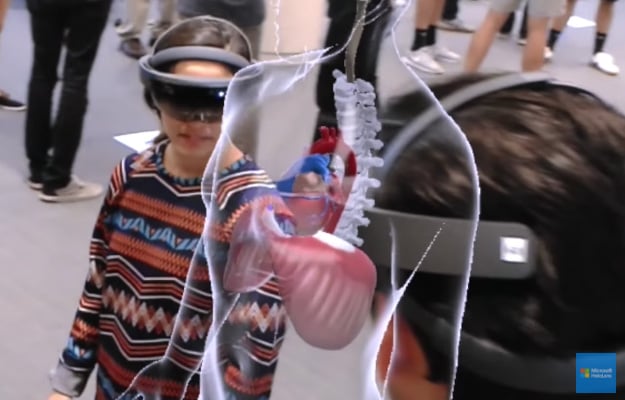Microsoft Empowers Surface And Windows 3D Mixed Reality Experiences For Education

We are on the precipice of some exciting things thanks to the introduction of virtual reality, augmented reality, and mixed reality into the mainstream. Much of the attention early on has been focused on gaming, with the Oculus Rift and HTC Vive stealing the limelight, along with breakout hits such as Pokemon Go. But gaming is not the only segment that stands to benefit. There is a big opportunity in education, one that Microsoft hopes to pioneer.
To that end, Microsoft announced a new strategic partnership with Pearson, one of the biggest education companies in the world that also happens to be working to integrate 3D and mixed reality into high school and college curriculum. Pearson is making quick work of this effort, too—by next year, Pearson will offer curriculum in health, commerce, history, and STEM on all Windows mixed reality devices.
On top of this collaboration, Microsoft announced a new feature headed to Windows 10 this fall called View Mixed Reality. What this does is allow users to hold up a tablet or other mobile device and view the real world as mixed reality right on their handheld display. In order for this to work, a device will need to have a simple RGB camera.
Realistically the use of mixed reality in education will likely be a niche thing for several years to come. However, this can be considered the starting point towards that eventuality, and it is pretty exciting to think about. Microsoft put together a short video that demonstrates some of the ways mixed reality could be used in education. One example is a floating anatomic model of a human. Students are able to view 3D representations of organs and bones, which is a much more immersive way of learning compared to viewing a 2D drawing in a book.
In another example, a music student is playing the horn while viewing musical notes floating right in front of him. The whole idea, as one student points out in the video, is being able to interact with the things they're learning.
"I'm a visual learner. I'm someone who learns by experiences as opposed to just reading it out of a book," another student adds. "And so having the HoloLens put that visual in front of you makes things much easier."
Of course, Microsoft's HoloLens isn't cheap—the Development Edition runs $3,000. However, there are lower priced mixed reality headsets on the horizon, Acer, Asus, Lenovo, and others are bringing them to market, some of which will cost just $299.
It almost makes you want to pull a Billy Madison and go back to school, doesn't it?

